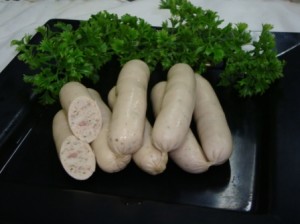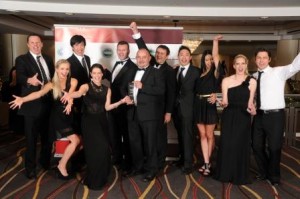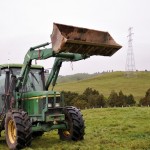Success depends on innovation, says the head of one of the world’s leading retailers – and a major customer for New Zealand lamb.
Speaking at the FT Innovate 2012 conference in London in early November, Tesco Plc’s group chief executive Philip Clarke said: “Be it nations or companies, if you don’t innovate; if you cling to the old way of doing things in the forlorn hope that the pace of change will slow; if you dare not take risks for fear of failure – if you do these things, then decline is inevitable.”
Change and innovation are part of every successful businesses’ DNA, he said and related the story of Tesco’s founder Jack Cohen “an innovator to his fingertips.”
It was Cohen who helped bring the concept of a self-service supermarket to Britain after World War II “an innovation that changed the entire retail industry.”
His innovative streak was borne out of an attitude of mind. “He’d travel, he’d constantly ask questions, spark ideas, try things. Lesson one from Jack then: to innovate we must create the right mindset.”
Since then Tesco has been leading innovation in retail “everything from new formats like Express to centralised distribution, which have revolutionised the supply chain here in the UK,” said Clarke.
The digital revolution is heralding a new era of retailing. While the customer always was king, thanks to digital technology, today’s customers are more powerful than ever. “Not just with more information and choice of goods and services to buy, but a choice of ways to shop at whatever time they like,” he said, adding that social media creates fashions in seconds, making or destroying brands within a day.
In the wake of the change has come data. “The vast, almost infinite quantities of data now available means no retailer has any excuse not to abide by the first law of business: know your customer.”
The insights gleaned by Tesco by its Clubcard, launched in the 1990s, turbo-charged Tesco’s growth. Data is now helping Tesco to drive innovation: “Which is why we own Dunnhumby, our marketing services business.”
While data is important, experimentation is vital. “Try, try and try again. And in the face of failure look for what is good about the experiment. Encourage your people to try again, to build on the success, not blame them for the failure.”
People said, when Tesco.com was launched in 2000, it would not work. “Today it is the world’s largest and most profitable online grocery retailer and we are rolling out the service across all our markets. Already more than five years old in Korea and Ireland; we have launched it in Slovakia, Czech, Poland. Thailand follows very soon.”
That roll out has been made possible thanks to an innovative IT platform that has been developed by Tesco’s Hindustan Service Centre, the company’s global services arm based in Bangalore, said Clarke.
“Employing over 3,000 technologists, this is where we develop new web services and systems so they are on a common operating platform, allowing is to set them up easily in markets around the world.”
Clarke described Tesco as a ‘blueprint led organisation’. “Once innovations are proved successful, a blueprint is developed and managers trained to speed adoption around the world.”
In each of their markets, Tesco.com’s offer has to be tailored to meet the local culture and tastes. New innovations to aid speeding delivery to the customer include Mapster, an application which tracks Tesco vans in real time and is being piloted in some stores around London. Tesco has also created a virtual store in Seoul, Korea, where commuters can use their smartphones on the platforms of the city’s underground to scan the barcodes of the products they want – and then their shopping gets delivered to the address of their choice later on the same day.
“Our Korean colleagues lead on digital innovation for the Group – not because we asked them but because we fostered a culture of innovation; we encouraged innovation and recognised colleagues for trying.”
Clarke liked to think that Jack Cohen would be proud of what Tesco did with Facebook, asking customers what ice-cream flavours they wanted – the 21st century equivalent of his 1930s store tours in Hackney. “Asking customers what they want isn’t new, but doing it the digital way is.”
Looking to the future, Clarke said for retailers it’s no longer going to be sufficient to innovate simply to meet an existing customer trend. “We need to innovate to anticipate what customers want. Successful retailers will not be those who meekly follow the customer like some obedient puppy. They will be one step ahead, offering people new ways to make their lives that bit better.”
Those innovations have to fit a powerful trend created by the power of digital technology,. “People want and increasingly expect personal service, a personalised choice, a sense that a brand – be it a retailer or media organisation – has tailored what they offer to fit their own unique needs and wishes.”
The drive to personalisation will be propelled even further by the internet of things. “Everything from the light bulb in your house to the car you drive will be connected to the internet… Mass personalisation, plus the internet, will determine everything, from pricing and promotions to the internet.”
Innovations depend on much more than just clever people who are experts at technology; and they rely on much more than just using customer insight in an intelligent way, Clarke said.
“From the perspective of any CEO, a company that truly excels at innovation is a company whose culture rewards innovation. It is a culture where people understand that, to change, to create something new, means taking risks. A culture where people know that innovations can certainly fail, that mistakes happen, but you learn from them; where aiming high, having a big, bold idea is not frowned upon, but encouraged. A culture in which the leaders think the biggest mistake is not trying, not experimenting, not taking a risk.”





